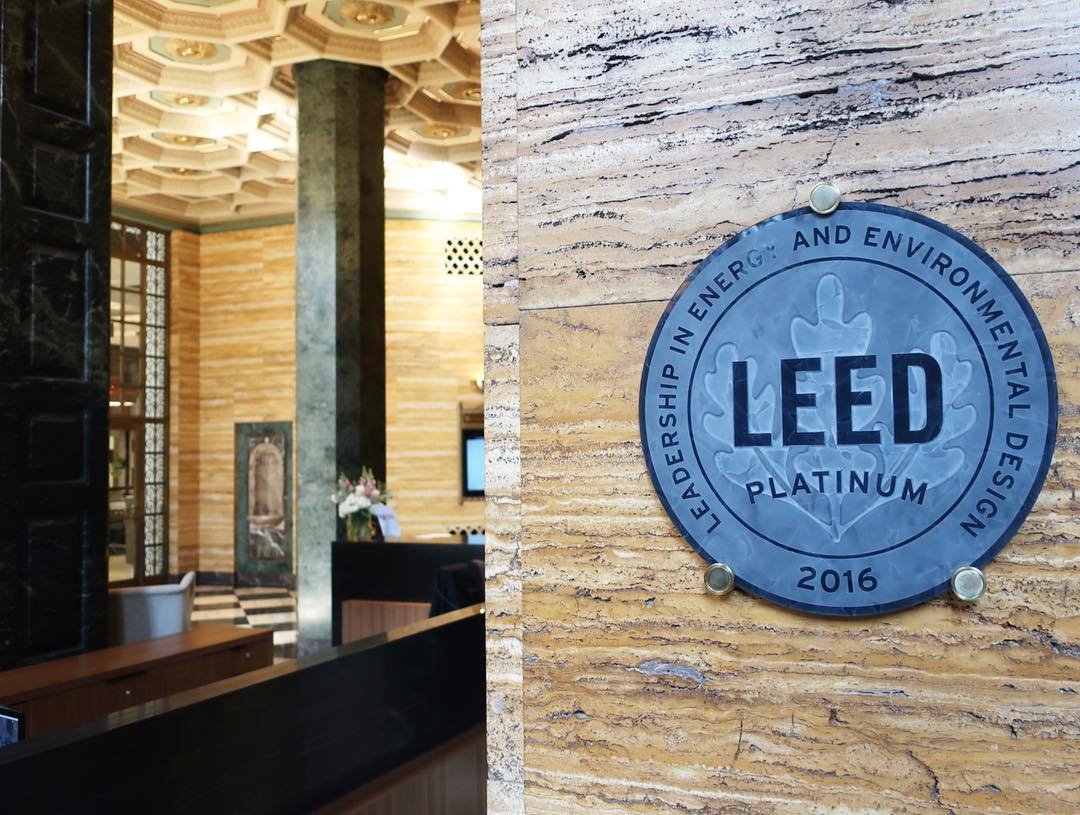Triple Bottom Line Investing: Focus on Environmental
In my January blog post, I discussed our house philosophy on triple bottom line investing – achieving a return on one’s investment along with a social justice component and a positive environmental impact. As we continue our renovation planning process on One Bunker Hill, I wanted to focus on the environmental impact portion of our impact strategy as it relates to our current efforts.
While investing in the social and technological aspects of our assets is extremely important, investing in the environmental impact at our properties is something I am especially focused on, especially given the alarming facts about a typical building’s carbon output and the technology available to decrease that carbon output and maximize savings.
Most building owners believe that upgrading systems and obtaining certifications in to reduce their existing building’s impact on the environment is expensive and takes too long. While these investments do cost upfront capital, the savings and operational efficiency far outweigh the initial expenses. Not only have we seen utility bill savings at our projects, we’ve also seen:
- An increase in leasing activity from tenants seeking environmentally conscious buildings
- An increase in rental rates
- An increase in productivity with more efficient lighting standards and natural light influx
- An increase in public relations and marketing activity
- An increase in building value upon sale
“Deep retrofits have been estimated to add $3-$30 per square foot to the value of office space based on decreased operating costs and higher occupant productivity” (The Carbon War Room)
We’ve found that the tenants that truly care about their work environment are often willing to pay a premium for environmentally conscious space. As such, we believe that certifications such as LEED and ENERGY STAR® pay for themselves many times over.
According to a study by Nils Kok and the University of California, Berkeley, “an office building registered with LEED or ENERGY STAR® rents for a 3 percent premium, on average. Labeled buildings have effective rents that are almost 8 percent higher than those of otherwise identical nearby non-rated buildings.” Another recent study sponsored by the Royal Institution of Chartered Surveyors shows that “ENERGY STAR®-rated buildings command a sale premium of 16 percent on the building aggregate.” (The Carbon War Room)
While these certifications are an absolute must for all of our eligible buildings, we do not view them as the “end-goal” but rather as a byproduct of our environmental goals for a property. As part of our environmental philosophy, we strive to aim above and beyond the qualifications for both, which results not only in a certification, but in a better place to work.
As many people who live in urban core areas also work in the urban core, it’s crucial to be environmentally conscious in such dense areas. According to the Intergovernmental Panel on Climate Change, the buildings that we live, work, and play in are responsible for over 9 billion tons globally (8% of our global CO2 output annually), of manmade carbon dioxide equivalent emissions each year. By investing in advanced materials and technology in our existing building environment, building owners are able to decrease energy usage and increase savings down the road.
In a property we currently have under contract, we are pursuing the installation of a Variant Refrigerant Flow (VRF) HVAC system. VRF systems run refrigerant from the roof to tenant spaces and do not require a boiler, cooling tower, or central air ventilation system, saving valuable roof and vertical shaft space. Consisting of multiple package units, the system is quieter, smaller, and allows for simultaneous heating and cooling in different areas of the building. The refrigerant flow and temperature can be constantly adjusted by zone without the assistance of an engineer, a significant improvement to the “on-or-off” nature of a conventional HVAC system. These extremely efficient systems, popular in Japan, Korea, and Western Europe, have very recently begun to penetrate the US market. We’re excited to implement this efficient building system, which on average results in a 30% HVAC energy cost savings.
As The Carbon War Room states perfectly, “it is cheaper to capture energy that would otherwise escape or be wasted through inefficiency than it is to build new energy generation capacity.” Even with the lowest levels of investment in existing advanced building technologies and systems, global electricity consumption can be decreased by 20%-30% over the next 10-15 years and energy savings can be realized.
As an investor myself, I know that that at the end of the day, all investors share one fundamental priority: maximize the return on an investment. As part of Rising’s owner and operator philosophy, we see environmental impact not only as an opportunity to maximize a return on investment, increase efficiency, cost savings and tenant satisfaction, but as our obligation as global citizens.
Sources:
The Carbon War Room
Intergovernmental Panel on Climate Change
